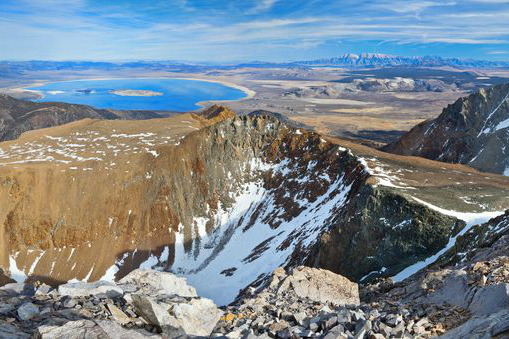Ranger's Secrets: Yosemite National Park
It wasn't adoration for Yosemite's granite peaks or alpine meadows that first lured Park Ranger Kari Cobb to this corner of the Sierra Nevada Mountains in 2004. Instead, it was a different love. Cobb's boyfriend (now husband) was working at the Tioga Pass Entrance Station. Shortly after Cobb arrived, however, she was hooked.
"I was so captivated by the beauty of the park that I stayed for the whole summer," she said. "The next summer I got a job in the Tuolumne Meadows Campground." From then on, Yosemite was home.
As the third most visited national park in 2012 with almost 4 million annual visitors, certain areas of Yosemite can feel more like Disneyland than a natural paradise. However, there are ways to escape the crowds and to experience miles of quiet and breathtaking landscape.
"We estimate that about 70-80 percent of visitors come to the Valley at some point in their stay," Cobb said. "Anything out of Yosemite Valley is less busy and less explored."
Cobb recommends visits to Tuolumne Meadows and Hetch Hetchy—both just 1.5 hours by car from Yosemite Valley. In these areas, she suggests you try the following options.
Watch the Sun Set From Mount Dana
Mount Dana, the second highest peak in Yosemite, sits just on the border of the protected area. For this reason, few people think to go there. However, this means visitors miss out on a unique vantage point.
"Not only can you see into Yosemite, but also into multiple forest service [areas] that surround the park and even down into the Mono Basin," she said. "It gives you views that are just spectacular."
From the Tioga Pass Road (generally closed November-May), you can find numerous routes that rise about 3,200 feet over 2.9 miles to the 13,053-foot summit. The paths are not official NPS trails, so they are not frequently maintained and often not shown on maps.
Hike the Kuna Crest
One of Cobb's favorite parts of the park is Kuna Crest. Due to its high-altitude, remote location, it's a great place to spend time alone with nature. From the top of the crest, you look down onto a series of icy, turquoise lakes at the bottom of the cliffs. You also have great views of Banner and Ridder Peak, as well as the Lyell and Maclure Glacier—the only two glaciers in the park.
The round trip hike is a strenuous 14-mile loop between 9,800 and 12,200 feet. You'll start at the Mono/Parker Pass Trailhead and follow the trail to Spillway Lake. At this point, abandon the path and hike up and along the Kuna Crest on the western shore of the lake, traveling northwest toward Mammoth Peak. Once you reach Mammoth Peak, cut north and you'll find the trail to return to your car. Because there is no path, make sure to take a compass, map and GPS.
Early-Season Backpacking in Hetch Hetchy
Although the famous Hetch Hetchy valley was dammed 100 years ago, this area still has a lot to offer. Late winter and early spring (February-April) are the best times to visit. Because the area is at a lower elevation than the rest of the park, Hetch Hetchy is clear when the rest of Yosemite remains buried in snow. And, despite the ease of access, the crowds don't arrive until later in the season.
Cobb recommends a backpacking trip to Lake Vernon. To get to the trailhead, take the road to Hetch Hetchy that dead-ends at the O'Shaughnessy Dam. Once you cross the dam, you'll see signs for the trail.
The trip out is 10 miles with an elevation gain of roughly 2,800 feet. The route takes you past the Hetch Hetchy Resevoir, Tueeulala Falls and Wapama Falls, as well as Beehive Meadow—an area that hums with the sounds of millions of insects. Once you arrive at Lake Vernon, you can continue around to the northeast side to explore different nearby tributaries and smaller lakes.
